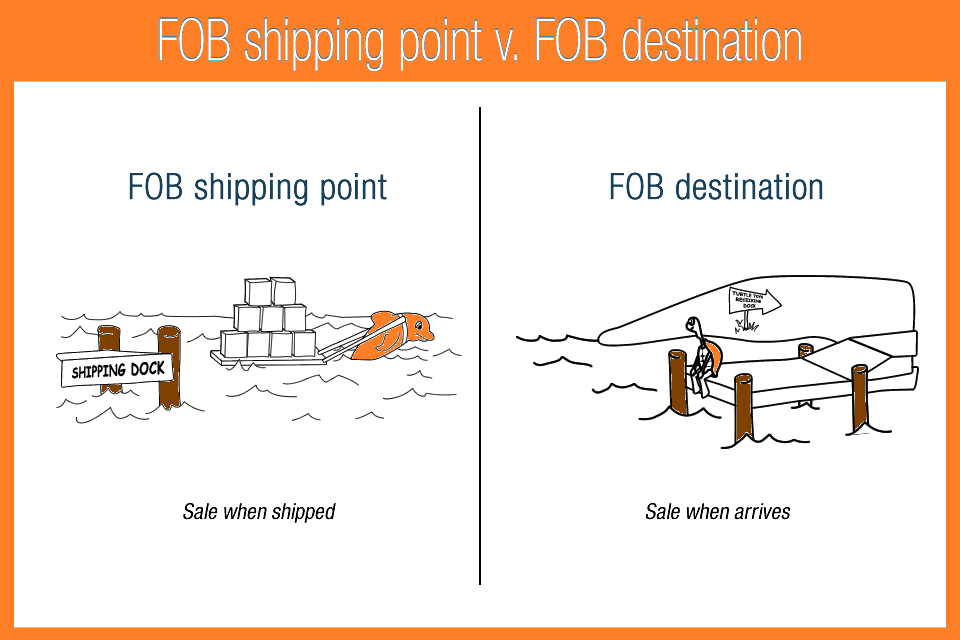Free on Board (FOB) in International Trade: What You Need to Know
In international trade, Free on Board (FOB) is a crucial concept. It clearly defines the transfer time of the ownership and liability of export goods, which is usually the moment when the goods are loaded onto the ship. FOB covers a series of expenses from the production and packaging of the goods to their transportation to the port and loading onto the ship. This is particularly important for calculating the final price of the export invoice, as it also affects the import duties and taxes of international freight. It can be said that understanding FOB makes the export process smoother.
I. Free on Board (FOB) in Export Trade
When exporting goods, FOB plays a decisive role. On the one hand, it clarifies the product price and the node at which the ownership and liability of the goods are transferred from the seller to the buyer, making it clear who will bear the risk of loss or damage of the goods during transportation. On the other hand, it influences the calculation of customs duties and taxes. Therefore, exporters must understand FOB so that they can prepare compliant invoices, have the necessary documents ready, and avoid disputes.
II. Composition of Free on Board (FOB)
1. Manufacturing Cost: It includes the costs of raw materials and labor consumed in product production.
2. Packaging Cost: The goods need to be well-packaged before being transported to the port to ensure transportation safety, and this packaging cost is included in the FOB.
3. Inland Transportation Cost: It refers to the cost of transporting the goods from the seller's warehouse or production site to the port of shipment, such as the expenses of road and railway transportation.
4. Loading Cost: It is the cost of loading the goods onto the ship at the port, including the costs of labor and machine usage.
5. Port Charges: It includes the export-related fees paid at the port, such as loading and unloading fees and customs clearance fees. The seller has to pay these fees before the goods are loaded onto the ship.
It should be noted that FOB does not include international transportation fees, insurance premiums, and other expenses incurred after the goods are loaded onto the ship. These are to be borne by the buyer.
III. The Representation of Free on Board (FOB) in Export Documents
When exporting, accurate and compliant documents are crucial. FOB will be clearly shown on the invoice, and the contents are as follows:
|
Composition Element |
Details Description |
|
Manufacturing Cost |
It covers the expenses of raw materials required for product production and labor costs, etc., and is the basic cost input for the production of products. |
|
Packaging Cost |
The cost incurred for packaging the goods to ensure transportation safety before they are transported to the port. This part of the cost is borne by the seller and included in the FOB. |
|
Inland Transportation Cost |
It refers to the cost of transporting the goods from the seller's warehouse or manufacturing site to the port of shipment. Common transportation methods include road transportation and railway transportation, etc., and the cost is included in the FOB. |
|
Loading Cost |
It refers to the various costs incurred in the process of loading the goods onto the ship at the port, such as the labor cost of hiring workers for loading operations and the related costs of using loading equipment, etc., all of which are within the scope of FOB. |
|
Port Charges |
It refers to a series of fees that need to be paid when the goods go through export-related formalities at the port, such as loading and unloading fees and customs clearance fees. As long as such fees are incurred before the goods are safely loaded onto the ship, they are paid by the seller and included in the FOB. |
Such a FOB invoice is important for compliance and financial accounting. It enables exporters to calculate the costs clearly and buyers to know where their obligations begin. Moreover, in many countries, import duties are calculated based on FOB. If the invoice is issued correctly, both the buyer and the customs authorities will know the declared value of the goods clearly, which can reduce disputes over the amount of duties payable.
IV. How to Calculate Free on Board (FOB)
Exporters need to be able to calculate FOB, which is crucial for pricing products reasonably and complying with international shipping and trade terms. It allows the seller to know the cost of the goods before shipment. To calculate FOB, you need to add up the manufacturing, packaging, inland transportation, loading, and port charges mentioned above.
The formula is: FOB Value = Manufacturing Cost + Packaging Cost + Inland Transportation + Loading Cost + Port Charges. The value calculated according to this formula is written on the FOB invoice, so that both the buyer and the seller know the expenses borne by the seller before loading.
V. The Role of Free on Board (FOB) in the Calculation of Import Duties
International trade must comply with customs regulations, and FOB is the basis for calculating the import duties and taxes of imported goods. It represents the cost of the goods at the place of loading, excluding the freight and insurance premiums after loading, etc. Using FOB as the basis for tax calculation can ensure that importers only pay taxes according to the value of the goods, and they do not need to pay taxes for the transportation costs, making the tax assessment fairer. When calculating the duties, first determine the FOB (that is, the value of the goods when they reach the port of shipment and are loaded onto the ship as shown on the FOB invoice), then add the transportation and insurance fees to obtain the CIF value, and finally use the CIF value to calculate the duties and taxes to be paid to the customs.
VI. The Advantages of Using Free on Board (FOB)
For both importers and exporters, there are many advantages of using FOB in export transactions:
|
Beneficiary |
Advantage Description |
|
Both Importers and Exporters |
Clearly define that the risk is transferred to the buyer after the goods are loaded onto the ship, clearly divide the responsibilities between the buyer and the seller, and effectively reduce disputes during the transportation process. |
|
Seller |
Bear the expenses before shipment, with clear and definite cost accounting, which is convenient for financial management; at the same time, the risk ends when the goods are loaded, reducing the risk faced by itself. |
|
Buyer |
Bear the expenses after shipment, be able to flexibly control the transportation and insurance arrangements according to their own needs, and master the initiative in logistics; and can clearly understand the cost composition of the product through the FOB invoice, with clear expenses. |
|
Exporter (from the Perspective of Cost-Effectiveness) |
For exporters with strong price competitiveness and limited profit margins, controlling the financial risk within the cost before loading is conducive to ensuring profitability. |
|
The Overall Import and Export Business |
Using FOB can ensure that the customs clearance process is relatively simple, the calculation of customs duties is based on evidence, ensure the accuracy and compliance of export information, and promote the smooth progress of international trade. |
VII. The Differences between FOB and CIF
In international trade, it is important to understand the differences between FOB (Free on Board) and CIF (Cost, Insurance and Freight), as they have different allocations of costs and responsibilities between the buyer and the seller.
1. FOB:
- Transfer of Ownership: After the goods are loaded onto the ship, the buyer assumes the ownership and risk.
- Expense Bearing: The seller pays the expenses before the goods are transported to the port, such as packaging, inland transportation, loading, and port charges. The buyer pays the freight, insurance premiums, customs duties, and taxes after the goods are loaded onto the ship.
- Risk: The risk of loss or damage of the goods is transferred from the seller to the buyer when the goods are loaded onto the ship.
2. CIF:
- Transfer of Ownership: The seller's responsibility is not limited to the port of shipment. The seller has to arrange the transportation and insurance from the port of shipment to the buyer's port of destination and pay the corresponding expenses.
- Expense Bearing: The seller bears the cost of the goods, preparation for shipment, packaging, inland transportation to the port of shipment, as well as loading fees, port charges, freight, and insurance premiums. The buyer bears other taxes, customs duties, and import expenses.
- Risk: The risk is transferred to the buyer when the goods are loaded onto the ship, but the seller pays the freight and insurance premiums, and the goods are transported under the seller's insurance policy, and the insurance coverage compensates the buyer for damage or loss during transportation.
The main differences are:
- Costs and Responsibilities: In FOB, the buyer pays the transportation and insurance fees, while in CIF, the seller pays them.
- Risk Transfer: In both cases, the risk is transferred to the buyer when the goods are loaded onto the ship, but in CIF, the seller insures the goods, which gives the buyer more peace of mind.
- Control: In FOB, the buyer controls the transportation logistics, while in CIF, the seller manages it, and the buyer has less control.
When choosing between FOB and CIF, enterprises should consider the characteristics of the goods, the degree of trust among trading partners, and their own control requirements. Indian exporters often choose FOB because their responsibility ends at the time of loading.
VIII. Conclusion
Enterprises engaged in foreign trade must be familiar with FOB in exports. It clarifies the transfer time of the ownership and liability of goods. Adding the FOB expenses to the export invoice makes the sales transparent and simplifies the calculation of export prices and taxes. When the seller uses FOB, the responsibility is limited to before the goods are loaded onto the ship, and the buyer has more control over the transportation logistics. It can also ensure the compliance of both importers and exporters. Understanding FOB clearly makes the transactions fairer and smoother, which is beneficial to all parties involved in international trade.
 English
English 简体中文
简体中文 繁體中文
繁體中文 Afrikaans
Afrikaans አማርኛ
አማርኛ Español
Español العربية
العربية Français
Français Dansk
Dansk Български
Български Беларуская мова
Беларуская мова বাংলা
বাংলা Português
Português Русский
Русский Afsoomaali
Afsoomaali فارسی
فارسی Türkçe
Türkçe كوردی
كوردی Deutsch
Deutsch 日本語
日本語 ไทย
ไทย Tiếng Việt
Tiếng Việt Italiano
Italiano עִבְרִית
עִבְרִית 한국어
한국어 Română
Română Nederlands
Nederlands Bahasa Indonesia
Bahasa Indonesia Shona
Shona




